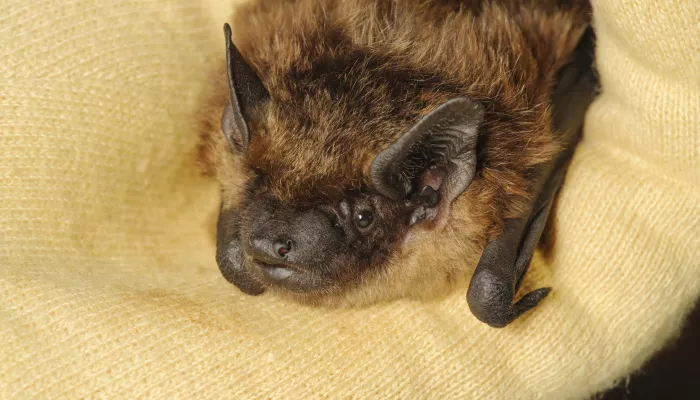About
The serotine is one of our largest bat species and one of the first to appear in the evening, often when it is still fairly light. It flies at treetop height and around lamp posts, using echolocation to hunt for flies, moths and chafer beetles. Serotines tend to roost and hibernate in older buildings and chimneys, and are rarely found in trees. During summer, the females form maternity colonies and have a single pup.
How to identify
The serotine has long, dark brown fur and a pale yellowish-brown belly. The wings, nose and ears are dark brown or black. It has a distinctive flight pattern with a slow flapping motion and short glides, often making steep descents.
Did you know?
Serotines will eat large beetles on the wing, dropping the wingcases and legs as they go. They catch most of their food within about 2km of their roosts, and will often catch insects directly from vegetation or the ground.

